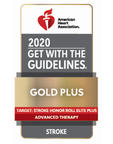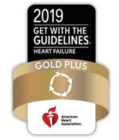Stroke Treatment
Stroke Treatment
Our multidisciplinary team of physicians and specialists includes emergency medicine physicians, neurohospitalists, neurosurgeons, interventional neurologists, and stroke certified nurses with advanced training. Upon arrival, the team quickly treats every patient with a comprehensive evaluation and collaborative management.
Stroke Treatment
1100 NW 95th St
Miami, FL 33150
305-835-6000
The First Thrombectomy-Capable Stroke Center in Miami-Dade
What does it mean to be a Thrombectomy-Capable Stroke Center?


It means North Shore Medical Center meets the rigorous standards for performing Endovascular Therapy (EVT), a specialized surgical procedure to remove a blood clot from the brain during an Ischemic Stroke. It means North Shore Medical Center has the capacity to perform Endovascular Therapy (EVT) around the clock, seven days a week.
Every 40 seconds in the United States, someone has a stroke, making it the fifth leading cause of death among adults. Our center is equipped with some of the latest diagnostic and therapeutic advanced to quickly and accurately diagnose and treat stroke patients. Patients benefit from a range of comprehensive medical, surgical and minimally invasive treatment options, as well as access to clinical trials and research.

What is a Stroke?
A stroke is an emergency requiring immediate medical attention. Strokes happen when blood flow to the brain is interrupted, causing brain cells to begin dying from lack of oxygenated blood.
There are two major kinds of stroke:
- Ischemic Stroke – The most common, is caused by a blood clot that blocks or plugs a blood vessel or artery in the brain. This clos causes a region of the brain to be deprived of oxygen and essential nutrients, leading to death of brain cells.
- Hemorrhagic Stroke – This type of stroke is caused by a blood vessel breaking and bleeding into the brain. Two types of weakened blood vessels that typically cause hemorrhagic stroke are aneurysms and arteriovenous malformations (AVMs).
- Brain Aneurysms – A brain aneurysm occurs when a blood vessel develops a weak area in the wall that allows the vessel to balloon out and fill with blood.
- Arteriovenous malformations (AVMs) – AVMs happen when a group of blood vessels in your body forms incorrectly. In these malformations, arteries and veins are unusually tangles.
Stroke Signs and Symptoms
- A sudden, severe headache
- Seizures
- Loss of sensation in part of the body
- Muscle Weakness
- Changes in vision
- Facial paralysis
- Drooping eyelids
- Problems with motion
- Confusion
- Dizziness
- Loss of consciousness
If you experience any of the stroke signs, or identify the signs in someone else, act F.A.S.T. and dial 911. Use the National Stroke Association’s F.A.S.T. test to help you remember the warning signs and symptoms of stroke:
- Face– Facial weakness – Ask the person to smile. Does one side of the face droop?
- Arms– Arm weakness – Ask the person to rise both arms. Does one arm drift downward?
- Speech– Speech problems – Ask the person to repeat a simple sentence. Are the words slurred? Can the patient repeat the sentence correctly?
- Time– If a person is having trouble with these basic commands, call 911 immediately.
Use F.A.S.T. to help you remember the signs.
Treating Stroke
Strokes are fast. We’re faster. At North Shore Medical Center, we treat strokes as a medical emergency. Once a “code stroke” is called our stroke team is activated and ready to provide our patients with rapid treatment. Most strokes are caused by blood clots plugging a blood vessel or artery in the brain. This type of stroke may be treated with a clot busting treatment know as thrombolytic therapy. The drug has been found to be most effective when administered within three hours of symptom onset. Time is extremely important when stopping a stroke in progress and minimizing the potential damage.
Endovascular Treatment
Our Interventional Neurology team provides a minimally invasive, endovascular approach to treating strokes, aneurysms, and neurovascular diseases of the brain and spine. Using catheters and radiology, our interventional neurologists perform minimally invasive procedures, such as stent placement and embolization.
These procedures are performed under the guidance of advanced-ray monitors. Recent advances in imaging capabilities enable our highly-trained interventional neurologists to treat blocked arteries of the brain by removing, breaking-up, or even sucking out the blood clot.
Our facility has invested millions of dollars in neurointerventional equipment and devices. With the assistance of this equipment, our physicians are dedicated to saving lives and allowing patients to return to a normal life, in some cases without any loss of function.
At North Shore Medical Center, the following endovascular procedures are available:
Cerebral Angiography (Angiogram): allows us to view how blood is flowing within the brain. Our interventional neurologist inserts a catheter into a large blood vessel and injects contrast dye. The contrast dye causes the blood vessels to appear on the X-ray image.
Thrombectomy: an innovative surgical procedure used to remove blood clots from arteries and veins. Blood clots can disrupt the normal flow of blood to a part of the body, causing life-threatening conditions such as pulmonary embolism or an acute stroke. During the procedure, our interventional neurologist inserts a catheter into the patient’s blood vessel to remove the blockage and restore blood flow to the affected area.
Carotid Artery Angioplasty/Stenting: used to treat carotid artery stenosis, the narrowing in one or both of the carotid arteries caused by the buildup of plaque on the inside of the artery. During this procedure, our interventional neurologist inserts a catheter into a groin artery and guides the catheter to the affected carotid artery in your neck. A small balloon at the tip of the catheter is then inflated to clear the passageway. In some cases, a stent (tiny mesh tube) may be placed in the affected area to keep the artery open.
Endovascular Treatment for Brain Aneurysms and AVM’s: Aneurysms occur when there is a bulging area in an artery caused by a weakness in the artery’s wall. Brain aneurysms, also called cerebral aneurysms, affect the artery that supplies blood to the brain. Arteriovenous malformations (AVMs) are abnormal tangles of arteries and veins within the vascular system. Endovascular procedures involve the insertion of a catheter through the groin to treat these conditions. Our interventional neurologist may use different techniques to treat your aneurysm or AVM depending on your unique situation.
Intracranial Stenting: Intracranial vessel stenting, or simply intracranial stenting, is a minimally invasive procedure to treat severe cerebral artery stenosis. Cerebral artery stenosis is a narrowing of the arteries that supply blood to the brain. Intracranial stenting involves placing a wire mesh tube (stent) in a narrowed artery. The stent expands to open the artery. It stays in place to prevent more narrowing.
Testimonial
Daniel Brady, Ph.D.
Miami Shores Resident

I was sitting at my desk working on balancing a checkbook when my wife came over to help me find a check and noticed I had slumped over in the chair. My wife noticed I was making a gasping noise, had a facial droop and quickly called 911. Miami-Dade Fire Rescue showed up at our home within a matter of minutes. Thanks to the first responders and my wife’s quick reaction time I was at North Shore Medical Center within 25-minutes of having the initial onset of an ischemic stroke.
At the hospital, I underwent a CT scan and they diagnosed me with a large vessel occlusion which occurs when there is a blockage in the blood vessel supplying blood to the brain. I had a 2 cm blood clot blocking blood flow to the right hemisphere of my brain. They made a quick decision to provide me with a stroke intervention to allow blood back to my brain. Dr. Sonal Mehta, an interventional neurologist, used a small catheter he navigated from my femoral artery all the way up to my brain to retrieve and remove the blood clot from my body. Because North Shore Medical Center is a Thrmobectomy-Capable Stroke Center Dr. Mehta was able to quickly administer this lifesaving treatment.
When I woke up from the procedure, Dr. Mehta and Jill Figueroa, an advanced practice registered nurse (APRN) and stroke coordinator at the hospital, were right by my side. I was able to communicate in a full conversation with Dr. Mehta and Jill. Following their instructions, I was able to lift my arms and legs. Dr. Mehta said he knew at that time I had a really good chance of doing well moving forward because my early improvement was a very promising sign. They told me I was going to be okay which was reassuring to me because I knew in my mind something fairly serious had happened. Jill also called my wife to share the good news and my improved condition.
To this day, I attribute my recovery to the skill of Dr. Mehta’s interventional neurology expertise and the dedication of his hospital team as well as the initial speed of emergency medical services (EMS) in getting me quickly to North Shore Medical Center’s Comprehensive Stroke Center. After I recovered from the removal of the large blood clot, I found out that 25 percent of the people who have this type of severe stroke end up dying. Of those who live 50 percent suffer some type of disability given the size of the clot and where it occurred in my brain. I had little if any residual effects from this stroke on my brain function.
Everybody I know including my siblings regards my recovery from this type of stroke as miraculous. They were happy to see I only suffered minimally from my stroke. My father had a very serious stroke when he was about my age and never really fully recovered.
Today, I am back to exercising including lifting weights and doing sit-ups, walking and riding my bike. My cardiologist checked me out after the stroke and said I was in good shape. I am a member of the Miami-Dade Age-Friendly Initiative and have been able to get back to participating as a board-member on various health and community organizations. In addition, I am a volunteer for the Pelican Harbor Seabird Station and after my stroke I was able to help rescue and provide rehabilitation to sick, injured and orphaned native wildlife. Thanks to Dr. Mehta and the care I received, I have returned to a normal quality of life.
